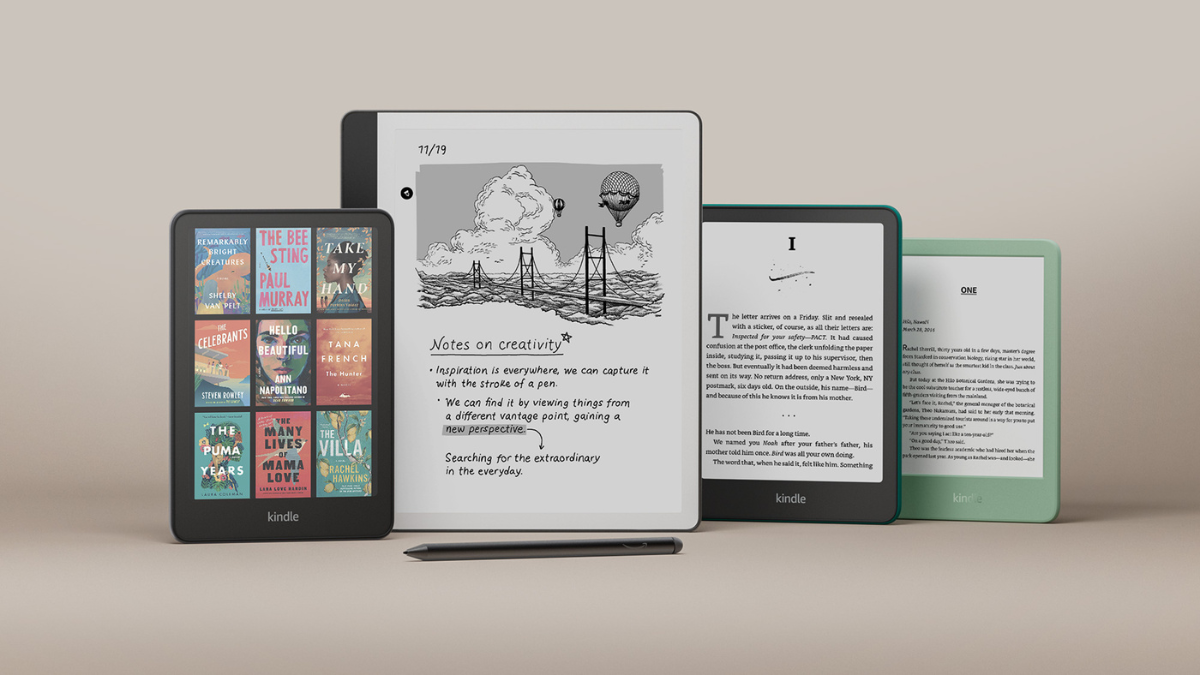What to know
- Recently launched Kindles add some splash to the lineup, but they also take away key features.
- Sideloading e-books on new Kindles is now more difficult because of MTP file transfer protocols. Sideloaded books also don’t retain page numbers (only loc).
- The option to ‘Download and transfer via USB’ on the Amazon website is also missing for new Kindles.
- All the four releases – Kinde basic, Paperwhite, Scribe and the new Kindle Colorsoft – are minor refreshes at best, and don’t justify an upgrade.
All our prayers and predictions came true when Amazon finally updated the entry-level Kindle. But no one was expecting a refresh of the entire lineup, including Paperwhite and Scribe – and a new color Kindle. Good on you, Amazon! But is the upgrade worth it?
As readers, all we really care about are books and a device that can carry them (while still offering the Kindle store and other ways to get books on the Kindle). If you’re a practical consumer, you may actually not be missing out on much if you don’t decide to upgrade your Kindle this year. In fact, if yours is an 11th gen Kindle, there are more reasons to give the new Kindles a pass. Here’s why.
Kindle 2024 lineup is out – Not with a bang, but a whimper
Amazon’s Kindle lineup now has four devices – the entry-level Kindle, Kindle Paperwhite, Kindle Scribe, and Kindle Colorsoft. But not all’s well with the lineup. Apart from the lineup being a mere refresh (and not an upgrade), there are some thorny issues that may steer users away.
1. Sideloading books could get problematic
If you use sideload your books, the new Kindles could pose some issues. One user pointed out that new Kindles use the Media Transfer Protocol (MTP) which doesn’t show up as normal USB storage on a Mac. To get around this, one will have to use OpenMTP or MacDroid to manage your files.
Calibre, a popular open-source book management app, is another alternative. But that could get problematic as well. After sideloading, you may find the page numbers missing on the book (with only loc and time left options available). Although this can be resolved by using the KFX conversion plugin to convert the books and add page numbers directly, it’s a long drawn out process.
The fact that this does not happen with older Kindles can only mean that Amazon’s trying to prevent users from getting the same reading experience with sideloaded books as they get with books bought on Amazon.
It may not be a problem for some. But for those who sideload books regularly, it’s a thorn in the side. In the future, one can expect the Calibre team to come up with a solution. But for now, you may have to contend with sideloading without page numbers.
Note: There’s cause to believe that sideloaded fonts don’t work properly either. But that is because of a firmware bug that has impacted older Kindles as well.
RELATED: 4 Ways to Send EPUB to Kindle
2. Download and Transfer of e-books won’t work
Along with sideloading restrictions, Amazon is further tightening the screws on digital piracy by removing the option to ‘Download and Transfer’ your e-books on the Amazon website’s Digital Content section. This was one of the few ways that users could download a local copy of their purchased e-books as backup. The ‘download and transfer’ option also came in handy when buying e-books from authors who don’t use Amazon but provide their books as EPUB downloads.
It’s highly likely that this change will eventually trickle down to older Kindle models as well. But unfortunately for those who’ve already bought the new Kindle, the absence of the Download and Transfer via USB option could limit what they can do with their e-books.
RELATED: Converting EPUB to Kindle
3. All the color, but not much else
With the release of Kindle Colorsoft, Amazon has finally caught up with the likes of Kobo that have had color e-reader devices for a while. Being the first ever color Kindle, the aptly titled Colorsoft (ostensibly for its soft muted color) breathes new life to book covers, highlights, graphic novels, and comic books.

Although Kindle Colorsoft is also much pricier ($279.99), only available in Signature Edition, some have noted that its colors are a little more vibrant than those on Kobo e-readers. However, the battery takes a hit. Even though it’s the Signature Edition, it lasts no more than eight weeks. While Paperwhite’s Signature Edition lasts three months. There is no standard version yet, which could suggest that the color displays significantly impact battery life.
Speaking of the new Paperwhite, both its standard and signature edition come in three colors – Raspberry, Jade, and Black. The 7-inch display is slightly larger than before. The page turns are 25% faster. And the contrast ratio is higher. But do these changes warrant an upgrade? Perhaps not, and neither does the much-touted ‘paper-like’ quality of the new scribe. Interface improvements alone do not compensate for killing off some of the core features that make Kindles good overall e-readers, and not just Amazon products.
There’s also the entry-level Kindle (also called the Kindle Basic) which now comes in Matcha. But other than the green, there isn’t much else that’s new (more on this later).
RELATED: Does a Kindle Device Really Help You Read More?
4. Higher price than usual
All new Kindles are priced slightly higher than their predecessors when they were released. Here are all the Kindles and their updated price:
- Kindle 2024 – $110
- Kindle Paperwhite (16GB) – $160
- Kindle Colorsoft – $280
- Kindle Scribe (16GB) – $400
Note that Kindle Colorsoft does not start shipping until October 30, and Kindle Scribe will release on December 4. Both of them are available for preorder.
There’s at least a $10 rise in price that isn’t completely justified, especially considering how little has changed. Unless you’re selling your current Kindle to get a new one, I can’t see myself recommending the upgrade (if it could be called that).
5. Entry-level Kindle is exactly the same!

As mentioned earlier, the new basic Kindle comes in Matcha green and has a 25% brighter light – and that’s it! Everything else is exactly the same as the 11th-gen Kindle basic. From the 300 ppi display to the battery life and the weight, the differences, if any, are marginal at best.
If you already have the basic Kindle (2022), you have almost the same device as Kindle (2024). There’s no reason why you should consider buying a new one, especially if you’re not that crazy about the color or if you slap a cover on your Kindle anyway.
If you already have a Kindle, keep it!
The extent to which Amazon is restricting users from doing what they please with their e-books (as it should be) is truly staggering. Without the option to download and transfer via USB, you now have much less control over how you interact with your e-books on the new Kindles.
By using a file transfer protocol (MTP) from a bygone era, Amazon has basically nerfed sideloading using a computer, which is (or was) one of the most convenient ways to get books on the Kindle. Until the folks at Calibre figure out how to transfer books without breaking page numbers on the new Kindles, Amazon’s grip on how you use your device remains.
All these issues are deal breakers in their own right. But they could potentially be overlooked if the new Kindles provided something substantial. Apart from faster page turns and some color, it’s been a disappointing upgrade on the whole.
RELATED: Play Books vs Kindle vs Apple Books: Our In-Depth Comparison of Small Screen Readers













Discussion